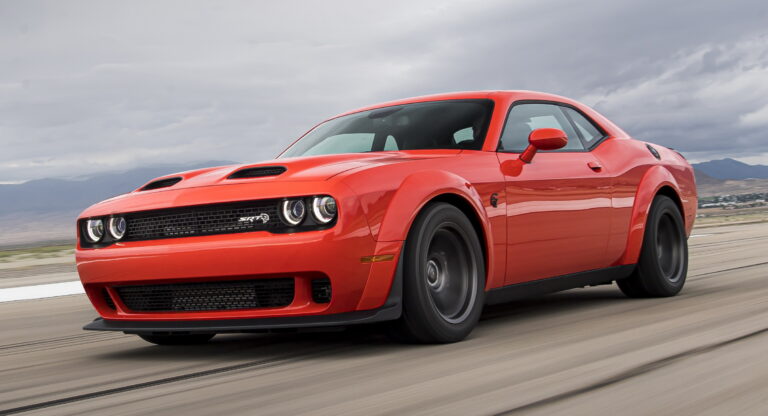Foreign Car Brands In India: Navigating a Dynamic Automotive Landscape
Foreign Car Brands In India: Navigating a Dynamic Automotive Landscape cars.truckstrend.com
The Indian automotive market, a vibrant and rapidly evolving landscape, has long been a magnet for global car manufacturers. From compact hatchbacks to luxurious SUVs, the presence of foreign car brands has not only diversified consumer choices but also significantly shaped the industry’s trajectory, fostering competition, innovation, and technological advancement. Understanding the journey, strategies, and impact of these international players is crucial to comprehending the dynamics of India’s automotive sector. This article delves into the multifaceted world of foreign car brands in India, exploring their historical presence, current strategies, market impact, and what the future holds.
Historical Overview: The Journey of Foreign Brands in India
Foreign Car Brands In India: Navigating a Dynamic Automotive Landscape
The story of foreign car brands in India is one of gradual opening, strategic partnerships, and fierce competition. Before the economic liberalization of 1991, the Indian automotive market was largely dominated by a few indigenous players and joint ventures with limited foreign equity, such as Maruti Udyog Limited (now Maruti Suzuki India Ltd.), a collaboration with Japan’s Suzuki Motor Corporation. This era saw limited choices, long waiting periods, and a focus on utilitarian vehicles.
The 1990s marked a watershed moment. With economic reforms, the gates opened for global automotive giants, eager to tap into India’s vast potential. Brands like Hyundai, Ford, Honda, General Motors, and Mercedes-Benz made their foray, bringing with them contemporary designs, advanced technology, and a renewed focus on consumer experience. While some, like Hyundai, found almost immediate success by understanding local preferences for value, features, and fuel efficiency, others faced a steeper learning curve, struggling with pricing, service networks, and adapting products to Indian conditions. The early 2000s saw more players like Toyota, Skoda, and Volkswagen enter, further intensifying the competition and offering Indian consumers a wider array of options across various segments.
Key Players and Their Strategies
Today, the Indian market is a melting pot of foreign car brands, each employing unique strategies to capture market share.
-
Japanese Brands (Maruti Suzuki, Toyota, Honda):
- Maruti Suzuki (Suzuki Motor Corporation): While often perceived as Indian due to its long history, Maruti Suzuki is fundamentally a partnership with a strong Japanese DNA. It dominates the mass market with its focus on affordability, fuel efficiency, low maintenance costs, and an unparalleled service network. Its strategy revolves around high volumes, localization, and constant innovation in the small car and budget SUV segments.
- Toyota: Known globally for reliability and quality, Toyota has focused on premium offerings in India, establishing a strong reputation with models like the Innova and Fortuner. Its strategy combines robust build quality with excellent resale value and customer service, targeting the discerning buyer who prioritizes durability and peace of mind.
- Honda: Honda carved a niche with its refined engines and sophisticated sedans. While facing recent challenges, it continues to focus on premium compact and mid-size segments, leveraging its brand image for quality and driving dynamics.
/GettyImages-480922636-b14be4a73a594bad8f75adf132a77818.jpg)
-
Korean Brands (Hyundai, Kia):
- Hyundai: A pioneer among foreign brands post-liberalization, Hyundai rapidly adapted to Indian tastes. Its success stems from a diverse portfolio spanning hatchbacks to SUVs, aggressive feature loading, contemporary design, and a strong after-sales network. Hyundai consistently challenges Maruti Suzuki for market share.
- Kia: A relatively new entrant (launched in 2019), Kia has achieved unprecedented success. Its strategy involves eye-catching design, feature-rich products, and a strong focus on the SUV segment, leveraging its parent company Hyundai’s existing infrastructure. Kia’s rapid ascent highlights the Indian consumer’s appetite for modern, well-equipped vehicles.
-
European Brands (Volkswagen Group, Mercedes-Benz, BMW, Audi, Renault, MG Motor):
- Volkswagen Group (Volkswagen, Skoda, Audi, Porsche): The VW Group emphasizes German engineering, safety, and driving pleasure. Volkswagen and Skoda target the mainstream and premium-mass segments, while Audi, BMW, and Mercedes-Benz dominate the luxury car market. Their strategy involves offering premium features, robust build quality, and strong brand heritage, increasingly localizing to be competitive.
- Renault: After initial struggles, Renault found success with the Duster SUV and later with value-for-money products like the Kwid and Triber, focusing on unique design and practical features for the mass market.
- MG Motor (SAIC Motor, China): Another recent success story, MG Motor has quickly gained traction by offering feature-loaded, internet-connected SUVs and EVs, coupled with aggressive marketing and a focus on technology.
-
American Brands (Jeep, formerly Ford, GM):
- Jeep: Stellantis-owned Jeep has carved a niche in the premium SUV segment, appealing to enthusiasts with its rugged image and off-road capabilities.
- Ford & General Motors: Both American giants exited the Indian market due to various challenges, primarily an inability to achieve sustainable volumes and profitability. Their experience serves as a cautionary tale about the complexities of the Indian market.
Factors Driving Success and Challenges
The Indian automotive market is a complex beast, demanding specific strategies for success.
Success Factors:
- Localization: Manufacturing locally, sourcing components from India, and establishing R&D centers significantly reduce costs and enable quicker adaptation to local needs.
- Understanding Consumer Preferences: Indian buyers are price-sensitive, prioritize fuel efficiency, demand ample features (especially infotainment and connectivity), and value ground clearance for varied road conditions. Brands that adapt their products accordingly thrive.
- Strong After-Sales Service and Network: A widespread, efficient, and affordable service network is paramount for building trust and ensuring customer satisfaction, given the long ownership cycles in India.
- Competitive Pricing and Aggressive Marketing: Balancing competitive pricing with perceived value and effective marketing campaigns are critical for attracting and retaining customers.
- Diverse Product Portfolio: Offering a range of vehicles across segments (hatchbacks, sedans, SUVs, MPVs) caters to a broader audience.
Challenges:
- Intense Competition: The market is crowded, especially in the budget and mid-range segments, dominated by Maruti Suzuki and Hyundai.
- Price Sensitivity: Indian consumers are highly price-sensitive, making it challenging for brands to balance features, quality, and affordability.
- Regulatory Changes: Evolving emission norms (BS6), safety standards, and taxation policies require continuous adaptation and investment.
- Infrastructure Limitations: While improving, issues like charging infrastructure for EVs or road quality can impact adoption of certain vehicle types.
- Building Brand Loyalty: With many options available, fostering long-term brand loyalty requires consistent performance and customer engagement.
- Supply Chain Disruptions: Global events like chip shortages or pandemics have highlighted the vulnerability of global supply chains.
Impact on the Indian Automotive Landscape
The influx of foreign car brands has had a profound impact on India’s automotive sector:
- Increased Competition and Consumer Choice: The primary benefit has been an unprecedented choice for consumers, leading to better products, features, and value.
- Technological Advancements and Innovation: Foreign brands have brought advanced manufacturing processes, safety features, engine technologies, and infotainment systems to India, pushing local players to innovate.
- Job Creation and Economic Growth: Investments by these companies have led to significant job creation in manufacturing, R&D, sales, and service, contributing substantially to the economy.
- Improvement in Manufacturing Standards: The presence of global players has elevated the overall quality and manufacturing standards across the Indian automotive ecosystem.
- Evolution of Consumer Preferences: Exposure to global products has made Indian consumers more aware and demanding regarding safety, features, and driving dynamics, moving beyond just basic utility.
Choosing a Foreign Car Brand: Practical Advice
For potential car buyers, navigating the array of foreign brands can be overwhelming. Here’s some practical advice:
- Define Your Needs and Budget: Clearly identify your primary use (city, highway, family), desired features, and a realistic budget for purchase and ownership (including fuel, maintenance, and insurance).
- Research Brand Reputation: Investigate the brand’s reputation for reliability, build quality, and resale value in the Indian market. Look at long-term ownership reviews.
- Evaluate After-Sales Service: This is critical. Check the availability of service centers in your area, cost of spare parts, and general feedback on service quality and responsiveness. A widespread and affordable service network can significantly impact your ownership experience.
- Test Drive Multiple Models: Don’t rely solely on reviews. Test drive several models that fit your criteria to assess driving comfort, handling, performance, and features firsthand.
- Check Safety Ratings: Prioritize safety. Look for models with good Global NCAP or Bharat NCAP ratings.
- Consider Fuel Efficiency and Maintenance Costs: These are ongoing expenses. Compare real-world fuel efficiency figures and estimated service costs for different models.
- Assess Technology and Features: While tempting, ensure the technology offered is practical for your use and not just a gimmick. Check connectivity options, infotainment system ease of use, and essential safety features.
Indicative Price Table: Popular Foreign Car Models in India
Please note: Prices are ex-showroom (Delhi) and are highly indicative. Actual prices may vary based on variant, city, taxes, and ongoing offers.
| Brand | Popular Model(s) | Category | Starting Ex-showroom Price (INR Lakhs) | Key Highlight |
|---|---|---|---|---|
| Maruti Suzuki | Swift, Baleno, Brezza, Grand Vitara | Hatchback, SUV | 6.00 – 15.00 | Unparalleled reach, low running costs, high resale |
| Hyundai | i10 Nios, Creta, Venue, Verna | Hatchback, Sedan, SUV | 6.00 – 19.50 | Feature-rich, modern design, wide portfolio |
| Kia | Seltos, Sonet, Carens | SUV, MPV | 7.50 – 20.00 | Bold design, premium features, quick market share |
| Toyota | Glanza, Urban Cruiser Hyryder, Innova Crysta, Fortuner | Hatchback, SUV, MPV | 7.00 – 55.00 | Reliability, strong resale, premium segment focus |
| Honda | Amaze, City, Elevate | Sedan, SUV | 7.00 – 16.50 | Refined engines, comfortable ride |
| Volkswagen | Virtus, Taigun | Sedan, SUV | 11.50 – 19.50 | German engineering, solid build, driving dynamics |
| Skoda | Kushaq, Slavia | SUV, Sedan | 11.00 – 19.50 | Premium interiors, robust build, safety |
| Renault | Kwid, Triber, Kiger | Hatchback, MPV, SUV | 4.70 – 11.00 | Value for money, unique design, practical |
| MG Motor | Hector, Astor, ZS EV | SUV, Electric SUV | 10.00 – 28.00 | Internet-connected features, strong EV push |
| Mercedes-Benz | C-Class, GLC, E-Class, GLA | Luxury Sedan, SUV | 60.00 – 100.00+ | Brand prestige, luxury, advanced technology |
| BMW | 3 Series, X1, X3 | Luxury Sedan, SUV | 50.00 – 90.00+ | Driving pleasure, sporty dynamics, premium feel |
| Audi | A4, Q3, Q5 | Luxury Sedan, SUV | 45.00 – 80.00+ | Sophistication, technology, quattro AWD |
| Jeep | Compass, Meridian | Premium SUV | 20.00 – 40.00+ | Rugged appeal, off-road capability |
Frequently Asked Questions (FAQ)
Q1: Which foreign car brands are most popular in India?
A1: Maruti Suzuki (due to its Suzuki partnership) and Hyundai are by far the most popular in terms of sales volume. Kia, Toyota, and Mahindra (though Indian, competes directly) also hold significant market share.
Q2: Are foreign cars more expensive to maintain in India?
A2: It varies. Mass-market foreign brands like Hyundai and Maruti Suzuki generally have competitive maintenance costs and readily available spare parts. Premium and luxury foreign brands (e.g., Mercedes-Benz, BMW, Audi, Volvo) typically have higher maintenance costs and more expensive spare parts compared to their mass-market counterparts.
Q3: Do foreign car brands offer good resale value in India?
A3: Generally, Japanese (Toyota, Maruti Suzuki) and Korean (Hyundai, Kia) brands tend to hold good resale value due to their perceived reliability, low maintenance, and widespread service networks. European and American brands can be more variable, often depending on the specific model and its popularity.
Q4: Why did some foreign brands like Ford and General Motors leave India?
A4: Brands like Ford and GM exited primarily due to an inability to achieve sustainable sales volumes and profitability over the long term. Intense competition, high price sensitivity of Indian consumers, difficulty adapting products to local needs, and high investment costs were major contributing factors.
Q5: What is the future of foreign car brands in India?
A5: The future is bright but challenging. Foreign brands will continue to focus on localization, expanding their SUV portfolios, and heavily investing in electric vehicles (EVs) to meet evolving consumer demands and government regulations. Competition will remain fierce, pushing brands to innovate constantly in terms of technology, features, and ownership experience.
Concluding Summary
The narrative of foreign car brands in India is a compelling testament to globalization and market evolution. From tentative entries to becoming integral components of the automotive fabric, these brands have not only offered Indian consumers an unparalleled breadth of choice but have also been catalysts for technological transfer, job creation, and the enhancement of manufacturing standards. While the road ahead presents its share of challenges, including intense competition and the imperative to transition to sustainable mobility, the enduring presence and continued innovation by foreign car brands will undoubtedly shape the future of India’s dynamic automotive landscape, ensuring a vibrant and competitive market for years to come.





